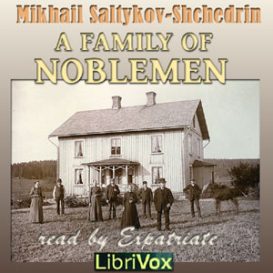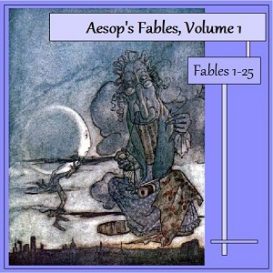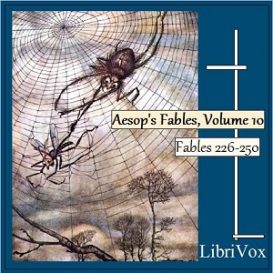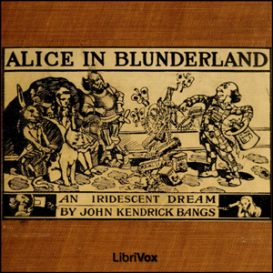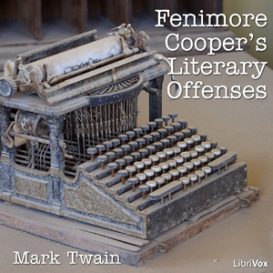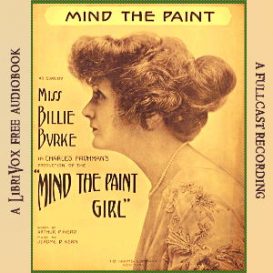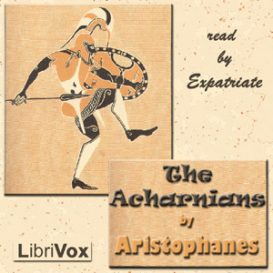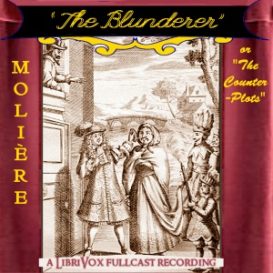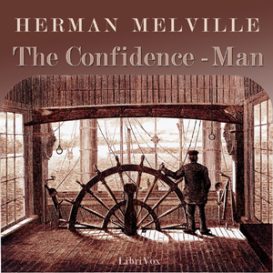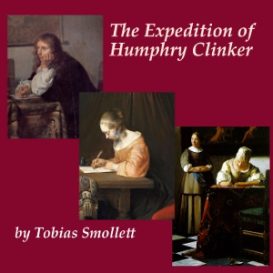Satire
Showing all 38 results
1601: Conversation, as it was by the Social Fireside, in the Time of the Tudors
Please note: this recording contains strong language. “1601,” wrote Mark Twain, “is a supposititious conversation which takes place in Queen Elizabeth’s closet in that year, between the Queen, Ben Jonson, Beaumont, Sir Walter Raleigh, the Duchess of Bilgewater, and one or two others … If there is a decent word findable in it, it is because I overlooked it.” 1601 depicts a highfalutin and earthy discussion between the Queen and her court about farting and a variety of sexual peccadillos, narrated disapprovingly and sanctimoniously by the Queen’s Cup-Bearer, an eyewitness at “the Social Fireside.” [Summary by Denny Sayers] Cast: Introduction ? Denny Sayers Narrator ? Jonathan Horniblow The Queen ? miette Beaumonte ? David Lawrence Lady Margery Boothy ? Kristin Hughes Lady Alice Dilberry, Ben Jonson, Lord Bacon ? Ruth Golding Lady Helen ? Philippa Sir Walter Ralegh ? Mark F. Smith Shaxpur ? Andy Minter
A Connecticut Yankee in King Arthur’s Court
Come and hear the strange tale of The Boss Hank Morgan, a modern day (at the time of publication) Connecticut Yankee who inexplicably finds himself transported to the court of the legendary King Arthur (as the title of the book implies). Hank, or simply, The Boss, as he comes to be most frequently known, quickly uses his modern day knowledge and education to pass himself off as a great magician, to get himself out of all sorts of surprising, (and frequently amusing) situations, as well as to advance the technological and cultural status of the nation in which he finds himself. In the rather un-subtle sub-text of the story, Twain uses The Boss to express a surprisingly pragmatic and frequently contradictory philosophy. The Boss explores the relative merits of Democracy, and Monarchy, he expresses his views on the ?Nature v. Nurture? debate, he frequently speaks forcefully against an established Church, but just as strongly advocates for religion and a variety of churches (just not a compulsory one) and he devotes at least one afternoon to introducing his companions to the concept of inflation. In a far more subtle, yet no less forceful manner, the Boss shares with the reader some views about taxation, slavery (both literal and wage slavery), trade unions, the origins of the German language, the nature of marriage, and probably most powerfully, death. It is a tall order for a relatively brief text, but Twain manages it all with surprising clarity. No one will agree fully with the Boss on all of these matters, and I would be surprised if Twain himself would. In fact the Boss?s views are so pragmatic, and often contradictory, the reader is left to wonder if Twain himself is alternately speaking through the Boss, and setting him up as a straw man. Either way it is a delightful story and a great piece of American Literature, to say nothing of an excellent argument for education. (Review written by Steve Andersen)
A Family of Noblemen
Meet the Golovliovs, the ultimate dysfunctional family. In the difficult transition years before and after the liberation of Russia?s serfs, the Golovliovs are a gentry family ill-equipped to face the adaptations necessary in the new social order. Petty, back-biting, greedy, rigid, ignorant, and cruel, their personalities are captured in the array of nicknames they themselves give each other: The Hag, Little Judas, Simple Simon, Pavel the Sneak, the Orphans, the Blood-Sucker. They hate each other ferociously and utterly despise the peasants around them, who are gradually awakening to the potentialities of their new freedoms. In this most famous of Saltykov-Shchedrin?s novels, there is a keen sympathy toward the plight of women caught in the complexities of social change: Anninka and Lubinka, the aristocratic orphans who, seeking independence, recklessly cast themselves into the bohemian life; the matriarch Arina Petrovna, whose desperately vigorous administration of the estate leads to an exhilarating but only temporary stability; the peasant girl Yevpraksia, who is resistlessly taken by the loathsome Porfiry Vladimirych as his mistress. Far from a piece of social propaganda, A Family of Noblemen shows a subtle portraiture of the complex characters and convoluted circumstances of the time. (Expatriate)
Absalom and Achitophel
John Dryden published Absalom and Achitophel: A Poem in 1681. It is an elaborate historical allegory using the political situation faced by King David (2 Samuel 14-18) to mirror that faced by Charles II. Each monarch had a son whom a high-ranking minister attempted to use against him. James Scott, first Duke of Monmouth, Charles II’s illegitimate son, was detected planning a rebellion late in 1681, supposedly instigated by the Earl of Shaftesbury, who was tried for high treason, and it is believed that Dryden wrote the poem in an effort to sway the jury in his trial. The fates of both Absalom (Monmouth) and Achitophel (Shaftesbury) are left unspecified at the end of the poem (Monmouth did rebel in 1685, after his father’s death, and was executed, and Shaftesbury was acquitted), but we are left to surmise that their fates would resemble those of their Biblical counterparts: Absalom was killed against David’s instructions and Achitophel hanged himself. The poem can be enjoyed without any special knowledge of either the Bible or seventeenth-century English history, but it is useful to understand why Monmouth (AKA Absalom) was such a useful tool to use against his father: Charles had many illegitimate offspring, but his wife was barren, so at his death the crown would pass (did pass) to his brother, James, who was Catholic, but Monmouth was Protestant as well as well-beloved by both the king and the people. England had good reason to dread a return of officially enforced Catholicism. The narrator’s urbane attitude toward David’s amatory adventures in the opening of the poem and his burlesque of the supposed Jebusitical plot (the “Popish Plot” of 1678) establish clearly his Tory bias in favor of the Establishment and his disdain of the panic caused by fear of Catholicism (Dryden himself converted to the Catholic faith at some time before 1685).
Aesop’s Fables, Volume 01 (Fables 1-25)
Dating back to the 6th century BC, Aesop’s Fables tell universal truths through the use of simple allegories that are easily understood. Though almost nothing is known of Aesop himself, and some scholars question whether he existed at all, these stories stand as timeless classics known in almost every culture in the world. This is volume 1 of 12. (Summary by Chip)
Aesop’s Fables, Volume 02 (Fables 26-50)
Dating back to the 6th century BC, Aesop’s Fables tell universal truths through the use of simple allegories that are easily understood. Though almost nothing is known of Aesop himself, and some scholars question whether he existed at all, these stories stand as timeless classics known in almost every culture in the world. This is volume 2 of 12. (Summary by ChipDoc)
Aesop’s Fables, Volume 03 (Fables 51-75)
Dating back to the 6th century BC, Aesop’s Fables tell universal truths through the use of simple allegories that are easily understood. Though almost nothing is known of Aesop himself, and some scholars question whether he existed at all, these stories stand as timeless classics known in almost every culture in the world. This is volume 3 of 12. (Summary by Chip)
Aesop’s Fables, Volume 04 (Fables 76-100)
Dating back to the 6th century BC, Aesop’s Fables tell universal truths through the use of simple allegories that are easily understood. Though almost nothing is known of Aesop himself, and some scholars question whether he existed at all, these stories stand as timeless classics known in almost every culture in the world. This is volume 4 of 12. (Summary by Chip)
Aesop’s Fables, Volume 05 (Fables 101-125)
Dating back to the 6th century BC, Aesop’s Fables tell universal truths through the use of simple allegories that are easily understood. Though almost nothing is known of Aesop himself, and some scholars question whether he existed at all, these stories stand as timeless classics known in almost every culture in the world. This is volume 5 of 12. (Summary by Chip)
Aesop’s Fables, Volume 06 (Fables 126-150)
Dating back to the 6th century BC, Aesop’s Fables tell universal truths through the use of simple allegories that are easily understood. Though almost nothing is known of Aesop himself, and some scholars question whether he existed at all, these stories stand as timeless classics known in almost every culture in the world. This is volume 6 of 12. (Summary by Chip)
Aesop’s Fables, Volume 07 (Fables 151-175)
Dating back to the 6th century BC, Aesop’s Fables tell universal truths through the use of simple allegories that are easily understood. Though almost nothing is known of Aesop himself, and some scholars question whether he existed at all, these stories stand as timeless classics known in almost every culture in the world. This is volume 7 of 12. (Summary by Chip)
Aesop’s Fables, Volume 08 (Fables 176-200)
Dating back to the 6th century BC, Aesop’s Fables tell universal truths through the use of simple allegories that are easily understood. Though almost nothing is known of Aesop himself, and some scholars question whether he existed at all, these stories stand as timeless classics known in almost every culture in the world. This is volume 8 of 12. (Summary by Chip)
Aesop’s Fables, Volume 09 (Fables 201-225)
Dating back to the 6th century BC, Aesop’s Fables tell universal truths through the use of simple allegories that are easily understood. Though almost nothing is known of Aesop himself, and some scholars question whether he existed at all, these stories stand as timeless classics known in almost every culture in the world. This is volume 9 of 12. (Summary by Chip)
Aesop’s Fables, Volume 10 (Fables 226-250)
Dating back to the 6th century BC, Aesop’s Fables tell universal truths through the use of simple allegories that are easily understood. Though almost nothing is known of Aesop himself, and some scholars question whether he existed at all, these stories stand as timeless classics known in almost every culture in the world. This is volume 10 of 12. (Summary by Chip)
Aesop’s Fables, Volume 11 (Fables 251-275)
Dating back to the 6th century BC, Aesop’s Fables tell universal truths through the use of simple allegories that are easily understood. Though almost nothing is known of Aesop himself, and some scholars question whether he existed at all, these stories stand as timeless classics known in almost every culture in the world. This is volume 11 of 12. (Summary by Chip)
Aesop’s Fables, Volume 12 (Fables 276-284)
Dating back to the 6th century BC, Aesop’s Fables tell universal truths through the use of simple allegories that are easily understood. Though almost nothing is known of Aesop himself, and some scholars question whether he existed at all, these stories stand as timeless classics known in almost every culture in the world. This is volume 12 of 12. (Summary by Chip)
Alice in Blunderland: an Iridescent Dream
From Alice in Blunderland: “Certain of our members claim that they have a right to sell their votes for $500 apiece–” “Mercy!” cried Alice, “Why, that is–that is terrible.” “It certainly is,” said the March Hare ruefully, it’s rotten. Here I’ve been holding out for $1,250 for mine, and these duffers want to go in for a cut rate that will absolutely ruin the business.” John Kendrick Bangs takes Carroll’s Alice in Wonderland and turns it into a political satire in many ways as fresh, keen and relevant today as it was a hundred years ago. (Summary by Ruth Golding)
Alice in Blunderland: an Iridescent Dream (version 2)
John Kendrick Bangs was an American author and satirist, and the creator of modern Bangasian Fantasy, the school of fantasy writing that sets the plot wholly or partially in the afterlife. (Wikipedia) Plot summary: J K Bangs has taken Alice from Lewis Carroll’s ?Alice in Wonderland? and lets her on a boring day travel with the Mad Hatter, the March Hare, the Cheshire Cat and the other of Carroll’s familiar characters to Blunderland. The story is a well written Satire, a witty, humorous tale of adventure and city politics, a tale of Alice in a land where nothing is as it should be. (Summary by Lars Rolander)
Anti-imperialist Writings
This audiobook is a collection of Mark Twain’s anti-imperialist writings (newspaper articles, interviews, speeches, letters, essays and pamphlets). (Summary by Vineshen Pillay)
Crome Yellow
Crome Yellow, published in 1921 was Aldous Huxley?s first novel. In it he satirizes the fads and fashions of the time. It is the witty story of a house party at ?Crome? where there is a gathering of bright young things. We hear some of the history of the house from Henry Wimbush, its owner and self appointed historian; Apocalypse is prophesied, virginity is lost, and inspirational aphorisms are gained in a trance. Our hero, Denis, tries to capture it all in poetry and is disappointed in love. The author, Aldous Huxley, was born in 1894 and began writing poetry and short stories in his early twenties; this was his first novel and established his literary reputation. (Summary by Martin Clifton)
Crome Yellow, Version 2
Fascinating and brilliant at many levels, Huxley’s spoof of Lady Ottoline Morrell’s famous bohemian gatherings is difficult to categorize. The ironic tone and caricaturish rendering of some characters makes it partly entertaining satire, but intertwined with the irony are a very human love story and much poignant social commentary. Denis Stone (Huxley himself) is a young poet hopelessly enamored of the languid Anne Wimbush, who comes to Priscilla Wimbush’s Crome estate for several weeks of intellectual and artistic escape. Along the way of his love affair, he engages in or eavesdrops upon conversations with other guests about the War, about eschatology, about future society, about Sex, about Art, about Love. Several of these dialogues directly foreshadow themes of Huxley’s later dystopian masterpiece, Brave New World. Others show a tragic prescience of another great European war on its way, an awareness that future tragedy might attempt to complete the unfinished business of the recent Great War. Huxley’s first novel, Crome Yellow is well worth reading in its own right, while containing embryonic forms of so much of Huxley’s later intellectual themes. – Summary by Expatriate
Fenimore Cooper’s Literary Offences
Fenimore Cooper – author of The Deerslayer, The Last of the Mohicans, etc – has often been praised, but just as often been criticised for his writing. Mark Twain wrote a funny, vicious little essay on the subject, in which he states: “In one place in ‘Deerslayer,’ and in the restricted space of two-thirds of a page, Cooper has scored 114 offences against literary art out of a possible 115.” (Summary by Gesine)
The “Mind The Paint” Girl
Another Pinero play from the early 1900s. With a social message about the effects of stardom on the star as well as those that love them. “I?m afraid there?s one thing finer than winning the woman you love and, when you?ve won her, being prepared to go through fire and water for her.” “What?s that?” “Having the courage to give her up” – Summary by ToddHW Cast list: Viscount Farncombe: Tomas Peter Colonel the Hon. Arthur Stidulph: alanmapstone Baron von Rettenmayer: Nemo Captain Nicholas Jeyes: Campbell Schelp Lionel Roper: Hamlet Sam de Castro: Aaron White Herbert Fulkerson: Fr?d?ric Surget Stewart Heneage: KevinS Gerald Grimwood: April 6090 Carlton Smythe (Manager of the Pandora Theatre): James Thomas Albert Palk (Actor at the Pandora): Sandra Schmit Wilfrid Tavish (Actor at the Pandora): Philip Watson Vincent Bland (A Musical Composer, attached to the Pandora): ToddHW Morris Cooling (Business Manager at the Pandora): Jim Locke Luigi (Ma?tre d?h?tel at Catani?s Restaurant): Pier The Hon. Mrs. Arthur Stidulph (Formerly, as Dolly Ensor, of the Pandora Theatre): TJ Burns Lily Parradell (Of the Pandora): Foon Jimmie Birch (Of the Pandora): Sonia Gabrielle Kato (Of the Pandora): Pauline Latournerie Enid Moncrieff (Of the Pandora): Leanne Yau Daphne Dure (Of the Pandora): EmmaHatton Nita Trevenna (Of the Pandora): Lex Hankins Flo Connify (One of Four Beauties Of the Pandora): Eva Davis Sybil Dermott (One of Four Beauties Of the Pandora): Availle Olga Cook (One of Four Beauties Of the Pandora): Devorah Allen Evangeline Ventris (One of Four Beauties Of the Pandora): Elsie Selwyn Mrs. Upjohn (Lily Parradell?s mother): DuckTD Gladys (Lily?s parlourmaid): Eva Davis Maud (Lily?s maid): Leanne Yau Stage Directions: Larry Wilson Edited by: ToddHW
The Acharnians (Billson Translation)
Loaded with cryptic, nearly indecipherable inside jokes and double entendres, this early comedy of Aristophanes has a simple, anti-war premise that resounds down the centuries. On flimsy pretexts, greedy politicians have embroiled the nation of Athens in war after war after war. Dic?opolis is Everyman, an ordinary, plain-speaking citizen fed up with the bumbling, belligerence, and insincerity of the professional leaders. He decides on a whim to make a separate peace with Sparta all by himself, returning with a treaty good for thirty years. Envious of the good deal he has made and of the profit he sees from it, other Athenians try to buy packets of his peace from him, with no success. Puffed up with his own cleverness, Dic?opolis spends the final scenes of the play ridiculing the muscle-brained neanderthal General Lamachus for faux patriotism and comic chest-beating heroism. This translation is by Charles James Billson, who admits in his preface with obvious regret that the chilling effect of ?modern Protestantism? had forced him to prune out the more risque and bawdy bits of Aristophanes?s lines, particularly most of the ?Phallic Hymn.? He tries to make up for this unfortunate lack, however, by filling the play with rhyme patterns and slang borrowed from the ?burlesque? halls of the 1880s, hoping to render the difficult Greek humor into the form of ?a lively acting play.? ( Expatriate)
The Admirable Crichton
From the author of Peter Pan: Lord Loam, a British peer, considers class divisions to be artificial. He promotes his views during tea-parties where servants mingle with his aristocratic guests, to the embarrassment of all. Crichton, his butler, particularly disapproves of this. Loam, his family, a maid, and Crichton are shipwrecked on a deserted tropical island. The resourceful Crichton is the only one of the party with any practical knowledge. Eventually, social roles are reversed, and Crichton becomes the governor. (Intro from Wikipedia & TriciaG) Cast (in order of appearance)
The Alchemist
An outbreak of plague in London forces a gentleman, Lovewit, to flee temporarily to the country, leaving his house under the sole charge of his butler, Jeremy. Jeremy uses the opportunity given to him to use the house as the headquarters for fraudulent acts. He transforms himself into ‘Captain Face’, and enlists the aid of Subtle, a fellow conman and Dol Common, a prostitute. In The Alchemist, Jonson unashamedly satirizes the follies, vanities and vices of mankind, most notably greed-induced credulity. People of all social classes are subject to Jonson’s ruthless, satirical wit. He mocks human weakness and gullibility to advertising and to “miracle cures” with the character of Sir Epicure Mammon, who dreams of drinking the elixir of youth and enjoying fantastic sexual conquests. The Alchemist focuses on what happens when one human being seeks advantage over another. In a big city like London, this process of advantage-seeking is rife. The trio of con-artists – Subtle, Face and Dol – are self-deluding small-timers, ultimately undone by the same human weaknesses they exploit in their victims. (Summary by Wikipedia) Cast: Subtle, First Neighbor: Elizabeth Klett Face: ToddHW Dol Common: Arielle Lipshaw Dapper, Second Officer: Nathanial W.C. Higgins Drugger, Third Neighbor: Thomas Leigh Moore Lovewit: Kevin Johnson Sir Epicure Mammon: Algy Pug Pertinax Surly, Fifth Neighbor, First Officer: Alan Mapstone Tribulation Wholesome: TriciaG Ananias: Martin Geeson Kastril: David Nicol Dame Pliant: Amy Gramour Fourth Neighbor: Charlotte Duckett Narrator: Kristingj
The Blunderer, or The Counterplots
A very early Moliere. From the Translator: “In this piece the plot is carried on … by a servant, Mascarille, who is the first original personage Moli?re has created; he is not a mere imitation of the valets of the Italian or classical comedy; he has not the coarseness and base feelings of the servants of his contemporaries, but he is a lineal descendant of Villon, a free and easy fellow, not over nice in the choice or execution of his plans, but inventing new ones after each failure, simply to keep in his hand; not too valiant, except perhaps when in his cups, rather jovial and chaffy, making fun of himself and everybody else besides, no respecter of persons or things, and doomed probably not to die in his bed.” – Summary by ToddHW Cast list: LELIO, son to PANDOLPHUS: Leanne Yau LEANDER, a young gentleman of good birth: Tomas Peter ANSELMO, an old man: Sonia PANDOLPHUS, an old man: Nemo TRUFALDIN, an old man: ToddHW ANDR?S, a supposed gipsy: Son of the Exiles MASCARILLE, servant to Lelio: Larry Wilson ERGASTE, a servant: alanmapstone A MESSENGER: Zames Curran CELIA, slave to TRUFALDIN: TJ Burns HIPPOLYTA, daughter to ANSELMO: Eva Davis Stage Directions: Devorah Allen Edited by: ToddHW
The Confidence-Man: His Masquerade
The Confidence-Man: His Masquerade was the last major novel by Herman Melville, the American writer and author of Moby-Dick. Published on April 1, 1857 (presumably the exact day of the novel’s setting), The Confidence-Man was Melville’s tenth major work in eleven years. The novel portrays a Canterbury Tales-style group of steamboat passengers whose interlocking stories are told as they travel down the Mississippi River toward New Orleans. The novel is written as cultural satire, allegory, and metaphysical treatise, dealing with themes of sincerity, identity, morality, religiosity, economic materialism, irony, and cynicism. Many critics have placed The Confidence-Man alongside Melville’s Moby-Dick and “Bartleby the Scrivener” as a precursor to 20th-century literary preoccupations with nihilism, existentialism, and absurdism. (Introduction by Wikipedia)
The Conscious Lovers
As early as 1720 Steele spoke in the Theatre of “a friend of mine” who was lately preparing a comedy according to the just laws of the stage, and had introduced a scene in which the first character bore unprovoked wrong, denied a duel, and still appeared a man of honour and courage. This was clearly an allusion to the play eventually to be published as The Conscious Lovers. – Summary by G. A. Aitken. Cast list: Sir John Bevil: ToddHW Mr. Sealand: Algy Pug Bevil, Junior., in love with Indiana: Adrian Stephens Myrtle, in love with Lucinda: Adam Bielka Cimberton, a Coxcomb: alanmapstone Humphry, an old Servant to Sir John: Larry Wilson Tom, Servant to Bevil, Junior: Tomas Peter Daniel, a Country Boy, Servant to Indiana: Arthur Nascimento Mrs. Sealand, second Wife to Sealand: Sonia Isabella, Sister to Sealand: Kathryn Phipps Indiana, Sealand’s Daughter, by his first Wife: Rapunzelina Lucinda, Sealand’s Daughter, by his second Wife: Devorah Allen Phillis, Maid to Lucinda: TJ Burns Servant: Leanne Yau Stage Directions: MichaelMaggs Edited by: ToddHW
The Constant Couple
George Farquhar, the author of this comedy, was the son of a clergyman in the north of Ireland. He was born in the year 1678, discovered an early taste for literature, and wrote poetic stanzas at ten years of age. In 1694 he was sent to Trinity College, Dublin, and there made such progress in his studies as to acquire considerable reputation. But he was volatile and poor?the first misfortune led him to expense; the second, to devise means how to support his extravagance. In the year 1700 he brought out this comedy of “The Constant Couple; or, A Trip to the Jubilee.” It was then the Jubilee year at Rome, and the author took advantage of that occurrence to render the title of his drama popular; for which cause alone it must be supposed he made any thing in his play refer to that festival, as no one material point is in any shape connected with it. – Summary by Mrs Inchbald, a critic of that time Cast list: Sir Harry Wildair: John Burlinson Alderman Smuggler: Kristin Gjerl?w Colonel Standard: ToddHW Clincher Junior: KHand Clincher Senior: K. Adrian Stroet Vizard: technoauloin Tom Errand: Dillon McFarlane Dicky: alanmapstone Constable: Newgatenovelist Servants: Anna Simon Lady Lurewell: Availle Lady Darling: Elizabeth Klett Angelica: Sonia Parly: Jacqui Castle Tom Errand’s Wife: Leanne Yau Mob: Sonia Stage Directions: Gaby Edited and Coordinated by: ToddHW
The Country Wife
One of the most notorious Restoration comedies in existence, William Wycherley?s The Country Wife is a lively and riotous exploration of courtly and city life in the seventeenth century, which was rife with unremitting sexual intrigue and conquest. For the basis of his plot, Wycherley here borrows heavily from the work of Moli?re, but abandons the French master?s unity and economy by introducing several interlocking storylines and characters, all of them clamoring for attention amidst Wycherley?s hard-hitting colloquial dialogue and double entendres. The main plot follows the clever town rake Horner, who feigns impotence in order to seduce women of quality and cuckold their unwitting husbands. One woman who takes interest in him is Margery, a seemingly naive country girl married to the pathologically jealous Pinchwife. Her desire to pursue an illicit affair with Horner yields a multitude of complications and misunderstandings, many of which are left scandalously unresolved by the time the final line is spoken. With startlingly frank explorations of gender dynamics, marital structures, female autonomy, misogyny, and seventeenth-century societal obligations, as well as an infamous ?china scene? positively dripping with innuendo, The Country Wife remains a classic of its genre that continues to invite fresh and exciting interpretations with each new performance. – Summary by Tomas Peter Horner: Tomas Peter Harcourt: Son of the Exiles Dorilant: MajorToast Pinchwife: Scotty Smith Sparkish: ToddHW Sir Jasper Fidget: Nemo Boy: Melanie Jensen Quack: Alan Mapstone Margery Pinchwife: Availle Alithea, sister of Pinchwife: Leanne Yau Lady Fidget / Bookseller: Beth Thomas Dainty Fidget, sister of Sir Jasper: Foon Mrs. Squeamish: Sonia Old Lady Squeamish: Eva Davis Lucy, Alithea’s maid: TJ Burns Narrator: Campbell Schelp Editor: Tomas Peter
The Expedition of Humphry Clinker
The Expedition of Humphry Clinker was the last of the picaresque novels of Tobias Smollett, and is considered by many to be his best and funniest work. Published in London on 17 June 1771, it is an epistolary novel, presented in the form of letters written by six different characters: Matthew Bramble, a Welsh Squire; his sister Tabitha; their niece and nephew, Jery and Lydia Melford; Tabitha’s maid Winifred Jenkins; and Lydia’s suitor, Wilson. Much of the comedy arises from differences in the descriptions of the same events by different participants. Attributions of motives and descriptions of behavior show wild variation and reveal much about the character of the teller. The setting, amidst the high-society spa towns and seaside resorts of the 18th century provides his characters with many opportunities for satirical observations on English life and manners. (Summary by Wikipedia)
The Family of Love
The Family of Love is an early Jacobean city comedy, first published in 1608. Published anonymously, the play was long attributed to Thomas Middleton and Thomas Dekker, although more recent scholarship suggests that Lording Barry may be the sole author. The play satirises the supposed sexual lasciviousness of the Familia Caritatis or “Family of Love,” the religious sect founded by Henry Nicholis in the 16th century. Maria is in love with Gerardine but her uncle, Glister the physician, opposes the match. Gerardine pretends to depart for a long ocean voyage, leaving a trunk containing his earthly possessions to Maria, but when Maria opens the trunk she finds Gerardine inside. Meanwhile, Glister cheats on his wife with the Familist wife of Purge the apothecary. Two dim-witted gallants, Gudgeon and Lipsalve, try to bed every woman they meet and want nothing more than to gain access to the secretive Familist Meeting House, which rumor has it is a bastion of free-love. With the help of Dryfat the merchant and Club the apprentice, Gerardine stages a mock trial with the intention of teaching everyone a lesson. – Summary by Wikipedia and Rob Board. Cast Narrator: David Lawrence Gerardine: Tomas Peter Maria: Khand Glister: Hamlet Mistress Glister: Sonia Mistress Purge: Leanne Yau Purge: alanmapstone Lipsalve: Rob Board Gudgeon: Andrew Utley Dryfat: Peter Tucker Club: ToddHW Shrimp: ScarlettG Periwinkle: Stoofy Vial: Nemo Within: Sandra Schmit Edited by: Rob Board




